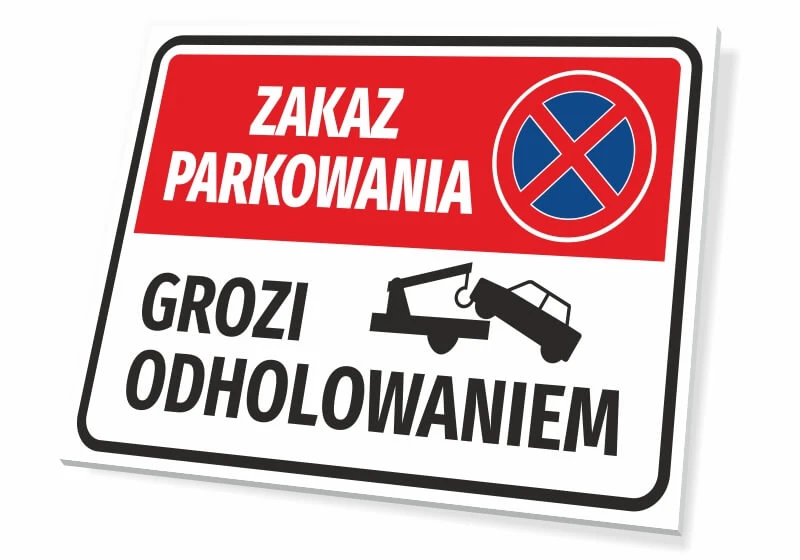Parking in the city is a topic that concerns every car owner, especially those who have their parking space in residential areas, whether multi-family or single-family homes. Nowadays, with the number of vehicles on our roads constantly increasing, adhering to parking regulations is crucial for maintaining order and safety in public spaces. Whether you are a homeowner in a quiet neighborhood or a resident of a large residential complex, understanding and following parking regulations can significantly impact the comfort and safety of all residents.
As a parking space owner, you are likely aware of how important it is to respect shared spaces and maintain proper parking standards. Improperly parked cars can not only inconvenience other residents but also pose a danger to pedestrians and other drivers. That's why we have prepared this guide to help you understand the key rules of city parking and provide practical tips on how to park legally and safely.
In this article, we will discuss not only the general principles of parking in cities but also more detailed guidelines specifically for residential areas. As the number of vehicles on the roads increases, it becomes increasingly important to pay attention to visual communication tools indicating the rules in a given space. We will also cover issues related to curbside parking, parking on narrow streets, and in city centers where finding a free spot can often be challenging.
Our goal is to not only provide you with knowledge about the regulations but also practical advice to make everyday parking easier and help you avoid fines and unnecessary problems. Remember, responsible parking is not just about following the law but also about ensuring the comfort and safety of other road users and residents in your area.
We invite you to read on and hope that our guide will be a valuable source of information, allowing you to better manage your parking space and enjoy peace and order in your surroundings.
Parking rules in the city
Parking a vehicle in the city requires not only knowledge of the regulations but also common sense and respect for other road users and residents. Here is a detailed guide to the parking rules in various urban contexts:
General parking rules in cities
Parking in cities is regulated by the Road Traffic Act, which aims to ensure traffic flow and the safety of all road users. The most important general parking rules include:
- Parking in designated areas: Always park in designated areas marked with appropriate road signs or pavement markings.
- Maintaining minimum distances: When parking, maintain appropriate distances from intersections, pedestrian crossings, public transport stops, and driveways.
- Parking parallel to the curb: In most cases, the car should be parked parallel to the curb unless road signs indicate otherwise.
- Observing signage: Pay attention to no parking and stopping signs and information boards specifying the hours during which these prohibitions apply.
Parking rules in residential areas
A residential zone is an area designated near residential buildings, both apartment blocks and single-family homes. It has specific regulations aimed at ensuring pedestrian safety.
According to Article 2, Section 16 of the June 20, 1997, Road Traffic Law, a residential zone is an area covering public roads or other roads where specific traffic rules apply, and the entrances and exits are marked with appropriate road signs. The D-40 information sign, depicting two white figures playing ball, a house, and a vehicle on a blue background, indicates the entrance to this zone. The corresponding sign with a cross-out is located at the exit from the zone.
In a residential zone, parking spaces must be clearly marked. Both horizontal and vertical signage is required. On the pavement, lines P-18 or P-19 are used, depending on the parking method. Additionally, vertical signs D-18 and parking boards T-30 must be used. All these elements aim to clearly define the layout of parking spaces.
Sidewalk parking rules
Parking a car on the sidewalk is allowed only in specific cases and under certain conditions:
- Partial sidewalk parking: You can park partially on the sidewalk if a road sign allows it, and pedestrians have a minimum width of the sidewalk (usually 1.5 meters).
- Complete sidewalk parking: In some places, road signs allow complete sidewalk parking, but ensure that it does not obstruct pedestrian traffic or damage urban infrastructure.
What should you remember?
Understanding and adhering to city parking rules is crucial for maintaining order and safety. Parking in designated areas, following signage, and considering specific regulations in residential zones, on sidewalks, near schools, airports, and railway stations are fundamental elements of responsible parking. Remember, proper parking is not just about following the law but also about ensuring the comfort and safety of other residents and road users.
How to park in a residential area?
Parking in urban areas is a challenge that requires not only knowledge of the regulations but also the ability to adapt to various situations and locations. This is particularly important in residential zones, where parking rules aim to ensure safety and convenience for both drivers and pedestrians. In such places, pedestrians have priority, and vehicles must move at a reduced speed, which also affects how we park.

In residential zones, parking is only allowed in areas designated by parking signs. This helps avoid chaos and ensures clarity and order in the residential zone. Improper parking can not only cause traffic difficulties but also pose a danger to pedestrians, including children playing on the streets. Therefore, it is essential to know and follow the parking rules in different situations that may arise in urban areas.
Next, we will look at various types of parking most commonly encountered in the city. We will discuss curbside parking, parallel parking, parking on narrow streets, and on one-way streets. Each type has specific requirements and techniques worth knowing to park safely and legally.
1. Curbside parking
Curbside parking is one of the most common forms of parking, especially in densely built-up urban areas. To park correctly at the curb, you should:
- Position the vehicle parallel to the curb: The car should be parallel to the curb, no more than 30 cm away.
- Avoid obstructing traffic: Ensure that the car does not block other vehicles or obstruct pedestrian traffic.
- Follow signage: In some places, curbside parking may be prohibited during certain hours or on weekdays.
2. Parallel parking
Parallel parking is a skill that often proves challenging, especially for less experienced drivers. When performing the parking maneuver, ensure that the parking space is long enough to accommodate the car with room for maneuvering. Position the vehicle parallel to the car in front, about one meter away. Slowly reverse, turning the steering wheel towards the curb, then straighten it as you enter the space. If the car is not parallel to the curb, make small adjustments to improve the alignment.
When to start turning when parking?
During parallel parking, you should start turning the steering wheel fully to the right when the rear wheels of your car are level with the emblem of the vehicle parked next to you. In other words, when the central part of that car is visible at the level of your rear wheels, it's time to turn the steering wheel fully to the right. This moment is crucial to correctly align the car parallel to other parked vehicles.
3. Parking on narrow streets
In city centers, you often find dense buildings with many narrow streets. Parking there requires special caution and precision. To park safely on such streets, ensure that the chosen spot does not obstruct other vehicles. Typically, it is best to park curbside using parallel parking techniques. Pay particular attention to pedestrians and other road users, ensuring that the car is clearly visible.
4. Parking on one-way streets
Parking on one-way streets can be less complicated than on two-way streets, as you can usually park on both sides of the street. However, pay attention to signage. There may be location or time restrictions in place.
5. Parking in city centers
Parking in city centers is often challenging due to limited space in the paid parking zones and high traffic density. For convenience and to minimize traffic in city centers, consider using multi-level or underground parking lots, which offer more spaces and greater safety. Many city centers impose time limits and parking fees, so it is essential to follow these rules to avoid fines. Cities often provide park-and-ride options, allowing you to park on the outskirts and travel to the center by public transport.
Penalties for illegal parking
Illegal parking is an issue that affects both drivers and other road users. In cities, where parking space is often limited, proper parking is crucial for maintaining order and safety . Violating parking regulations can lead to various consequences, including fines, penalty points, and even vehicle towing. Below, we discuss the most common cases of illegal parking and the associated penalties.

Fines for illegal parking
Fines are the most common form of penalty for illegal parking. The amount depends on the type of violation and the regulations in force in a given city or country. The most common cases that can result in a fine include:
- Parking in a prohibited area: Parking in places where it is forbidden by road signs can result in a fine. Examples include no stopping zones, areas reserved for specific vehicles (e.g., emergency services), and spaces reserved for people with disabilities.
- Parking on a pedestrian crossing: Stopping on a pedestrian crossing or within 10 meters of it is severely punished as it poses a danger to pedestrians.
- Parking on the sidewalk: In many cases, parking on the sidewalk is only allowed under certain conditions (e.g., leaving enough width for pedestrians). Improper sidewalk parking can result in a fine.
- Parking in a paid parking zone without payment: In paid parking zones, lacking a valid parking ticket can lead to a fine.
Did you know that parking outside a designated space in a residential zone can result in a fine of 100 PLN and 1 penalty point?
Additionally, the car may be towed at the owner's expense if it obstructs traffic or poses a safety hazard.
Penalty points
Some parking violations may result in penalty points being added to the driver's record. Penalty points are an additional punishment for the vehicle owner. They are recorded in the system and can lead to further consequences, such as driving restrictions (after exceeding a certain number of points) or re-education courses.
Vehicle towing
In extreme cases, when a vehicle is parked in a way that severely obstructs traffic or poses a hazard, it may be towed. Towing involves additional costs borne by the owner and the time lost in recovering the car. Examples of situations where a vehicle may be towed include parking in a spot reserved for emergency services, blocking traffic, or parking at a public transport stop.
Administrative and civil penalties
Some cities impose additional administrative penalties for illegal parking (e.g., by charging higher fees for parking permits or revoking parking rights in certain city areas). In extreme cases, illegal parking can lead to civil liability, especially if it causes property damage or poses a safety risk to others. Examples include:
- Infrastructure damage: Parking in a way that damages sidewalks, urban greenery, or other infrastructure elements may result in the need to cover repair costs.
- Causing an accident: If an improperly parked vehicle contributes to a traffic accident, the owner may be held civilly liable and required to cover compensation costs.
Summary
Illegal parking carries serious consequences, both financial and legal. Fines, penalty points, vehicle towing, administrative penalties, and civil liability are just some of the possible punishments for violating parking regulations. Therefore, it is crucial always to park according to the rules, pay attention to road signs, and respect the rights of other road users and city residents. Responsible parking is not only about avoiding penalties but also about maintaining order and safety in our community.

Jarek
graphic designer and product specialist at Wallyboards
Jarek is a true virtuoso of graphic design software and has been creating unique visual projects since the very beginning of Wallyboards. He’s the one who brings individual customer ideas to life, transforming them into stunning wall decorations. He’s also responsible for developing new products and launching them in our online store.







